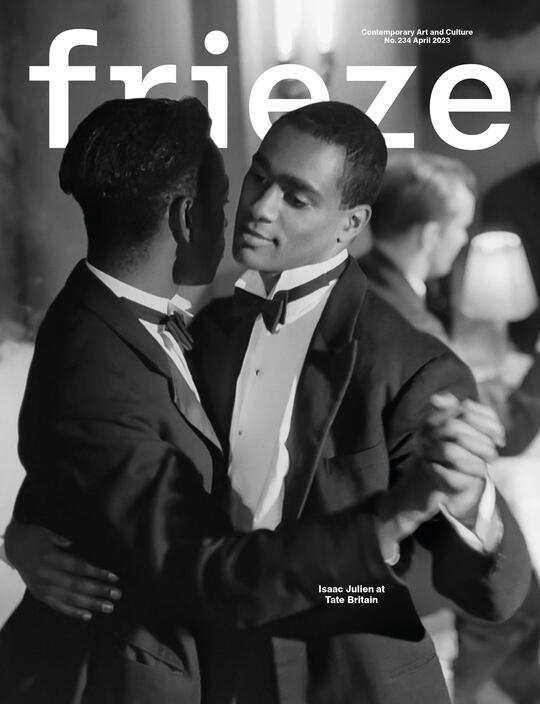Michel Majerus’s Timeless Reflections
At Neue Berliner Kunstverein, the late artist’s installations read as premonitions of visual culture today
At Neue Berliner Kunstverein, the late artist’s installations read as premonitions of visual culture today

Michel Majerus’s solo exhibition at Neuer Berliner Kunstverein doesn’t feature a single painting, despite the artist being best known for his large-scale works on canvas. It’s a curatorial choice of which Majerus – whose career was cut short by a fatal plane crash at the age of 35 – would have approved. The Luxemburgish artist’s non-hierarchical and discursive approach to images meant he held paintings, prints and murals in equal regard. Influenced by a plethora of then-nascent and now omnipresent social developments – including mass media, youth culture, digital imagery, pop music, television, 20th century (male) painters and video games – Majerus’s work, permeated as it is with references and meta-references that accrue seemingly infinitely, can also be read as a premonition of visual culture in its current state. Text-based wall pieces such as all like something (1999), for instance, feature often sardonic statements like ‘a response to something already experienced’ that hint at the fact we are all just participants of a reaction economy in which memes beget more memes.

Emulating artists of the previous generation such as Andy Warhol, Majerus styled himself as a brand long before online platforms enabled virtually everyone to do the same. The sculptural installation michel majerus (2000), for instance, comprises 25 monitors stacked on top of each other to form a tidy grid, showing an infinite loop of the artist’s name. The screen’s continuous flicker evokes 1990s video games, particularly Super Mario (1985–ongoing), whose image recurs frequently in Majerus’s practice. The idea of layering – whether it concerns monitors, paint or images – is not just an apt and timeless reflection of society’s mode of operating (faster, better, stronger) but also a distillation of the capitalist framework in which we, and the art market, are embedded. The video installation also draws on the continuous production cycle of images in the digital age: a condition to which I’m sure that 100 years ago it wasn’t a problem (1997) – a wall work in the shape of a racetrack streaked with gaudy orange and yellow stripes – also alludes.

Another piece in the show, generelle faszination (General Fascination, 1999) – a digital print depicting a plain white T-shirt with the word roböter (robot) printed onto it, in reference to Kraftwerk’s 1991 song ‘The Robots’ – stretches over adjoining walls. The single panels form a grid-like pattern with which Majerus nods to the aesthetics of Adobe Photoshop and the production and manipulation of digital imagery. Although this work made more than 20 years ago, Majerus’s sampling of quotes, logos and cartoon figures speaks to today’s visual culture at large, in which very little is truly original. He substantially rethought painting as a medium and spatial form – often emphasizing the colossal scale of his works, no matter whether a print or work on canvas – transporting the virtual cyberspace into physical reality.
‘Michel Majerus’ is on view at Neue Berliner Kunstverein, Berlin, until 4 February.
Main image: ‘Michel Majerus’, 2022–23, exhibition view, Neue Berliner Kunstverein. Courtesy: the estate of Michel Majerus and NBK, Berlin






















